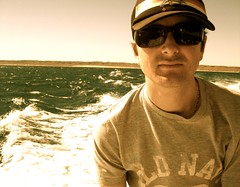While to many memories of the library might bring back long arduous hours of University researching and study, the library of today is a world away from the rows and rows of dimly lit books.
Today, libraries are, by necessity, one of the most digitally innovative institutions i know of. And it might seem strange to you, but some of the most digitally innovative people I know are librarians.
We've all heard about the statistics of how much more information is being produced every year and the librarians profession as an organiser and cataloger of information continues, but with ever larger volume, mediums and complexities.
I strongly recommend that you visit your local library or your library's website to browse their inventory of digital subscriptions - you will not be disappointed. After all many of you, through your local Council rates pay for the service of a library so make sure you damn well take advantage of it!
Here are just two services that I use:
Zinio - The World's Largest Newsstand. Most local libraries will subscribe to Zinio which offers the latest edition magazines for digital viewing. My local library subscribes to 70 different titles. I'm a bit of a home reno addict, so having access to Home Beautiful, Vogue Living and Gardening Australia is great. There are also heaps of titles on Photography, Business, Lifestyle and Sports.
PressDisplay / Press Reader. Remember when libraries used to have a few daily newspapers hanging off big wooden poles on a rack? No more, now with Press Display local libraries give you access to thousands (yes, thousands) of daily newspapers every day. I keep tabs on the major city Dailies to see what's hot in each city and have the occasional laugh with the US and UK tabloids.
There's also academic databases, eBooks, eAudio, videos and heaps more. I dare say it is one of the most under-utilised Council services out there.















